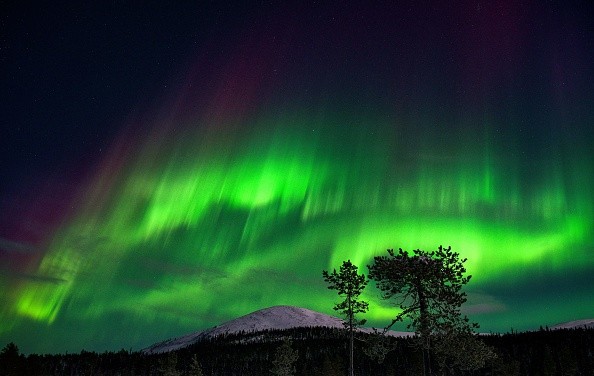Parts of Canada and the Nothern United States saw a magnificent view of the Northern lights in the skies of the Northern United States and Canada.
Northern lights in Northern United States and Canada
AccuWeather said a geomagnetic storm was expected in Canada and the United States last weekend.
Weather agencies explained that the blast of a geomagnetic storm could cause a rare display of northern lights.
The sight can become visible in parts of Canada, the Northern United States, the Northern Rockies, the Upper Midwest and New England.
Furthermore, Space reported that the rare northern lights and red auroras emerged last week.
The stunning image of red auroras also unfolded in the skies of Norway and Scotland.
Did you know? More facts about Northern Lights

The northern lights may have been beautiful, but the sight was full of amazing facts.
According to the Northern Lights Centre, the lights from the South are called Aurora Australis, while the lights from the north are called Aurora Borealis.
Light occurs when light collides with electrically-charged particles from the Sun that manages to penetrate into the Earth.
Moreover, the Northern Lights Centre added that pale yellowish is the most common light color.
The emergence of red auroras is considered a super-rare event.
Those aiming to see Northern Lights should stay updated with astronomy and space news. Preparing an excellent camera to capture rare events is essential.
Meanwhile, the Hurtigruten Expeditions explained that Northern Norway and Svalbard are considered the best places to witness the magnificent aurora lights.
Northern lights can become active in the months of March and September.
The rare emergence of the Northern Lights doesn't last long, which could be around 17:00 to 2:00.
As a result, stargazers and astronomy lovers should not miss the moment.
Hurtigruten Expeditions added that the lights coming from the Aurora event are not harmful to humans.
On the other hand, Nature World News (NWN) recently reported that a snow moon with a unique halo unfolded during the first week of February.
According to Almanac, the term "snow moon" is a full moon in February, noting that January and February have the heaviest snow.
Weather in Canada and US
The early beginning of February in Canada and the United States recorded severe winter storms that caused significant travel disruptions and cold-related health concerns.
In Canada, The Weather Network reported that parts of Atlantic Canada and Ontario experienced heavy snow and challenging cold due to the blast of the polar vortex and arctic air.
AccuWeather reported that Upper Midwest and Northeast experienced heavy snow and freezing rain in the United States.
In the South, Associated Press (AP) added that severe weather conditions and isolated tornadoes emerged.
Related Article : Fireball-Looking, Burning Asteroid Unfold in Sky of UK, France
For more similar stories, don't forget to follow Nature News.
© 2025 NatureWorldNews.com All rights reserved. Do not reproduce without permission.





